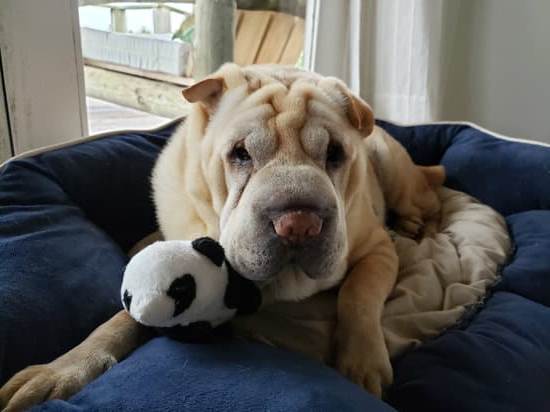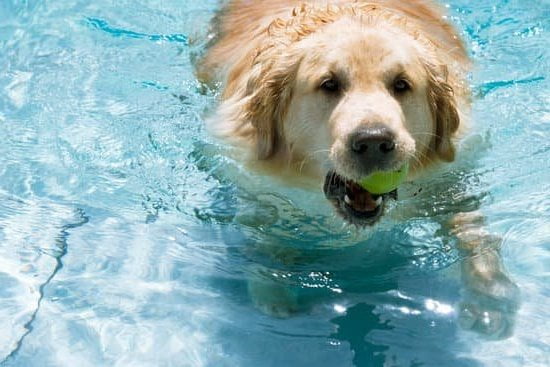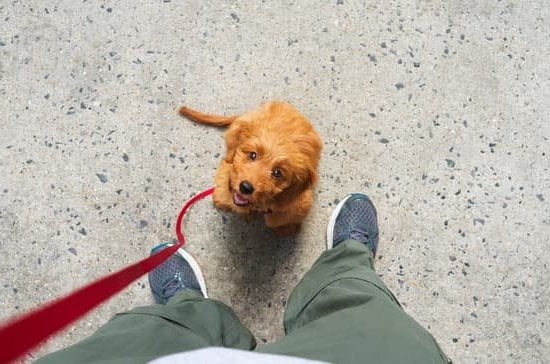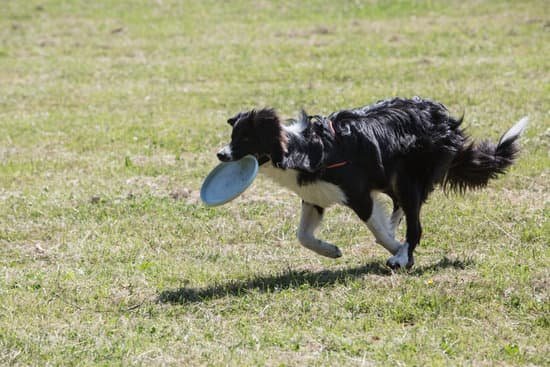Is your furry friend giving you a hard time during walks? Leash aggression in dogs can be a challenging behavior to address, but with the right training techniques, it can be managed effectively. Understanding why dogs become leash aggressive and learning how to train them to overcome this behavior is essential for both the well-being of your pet and your peace of mind.
Leash aggression can manifest in various ways, from lunging and barking to growling and snapping at other dogs or people while on walks. This behavior often stems from fear, anxiety, or frustration and may result from past negative experiences while on a leash. In this article, we will explore the signs and symptoms of leash aggression in dogs and discuss the importance of positive reinforcement training in addressing this issue.
Positive reinforcement training is a proven method for modifying unwanted behaviors in pets, including leash aggression. By creating a safe and comfortable training environment, using consistent techniques, and being patient throughout the process, you can help your dog learn to remain calm and composed while on a leash.
In the following sections, we will delve into step-by-step training techniques for leash aggression, correction methods for unwanted behavior during walks, and the significance of maintaining a positive relationship with your dog throughout training.
Signs and Symptoms of Leash Aggression
When it comes to leash aggression in dogs, it’s important for pet owners to be able to recognize the signs and symptoms. By understanding the behaviors associated with leash aggression, you can take proactive steps to address this issue with your furry friend. Here are some common signs and symptoms of leash aggression that you should look out for:
- Growling or barking at other dogs while on a leash
- Pulling excessively on the leash when encountering other dogs
- Snapping or lunging towards other dogs or people
- Showing signs of fear or anxiety during walks
- Exhibiting tense body language such as raised hackles, stiff posture, or showing teeth
It’s important to note that these behaviors are often rooted in fear, insecurity, or an attempt to protect themselves from perceived threats. By recognizing these signs, dog owners can take the necessary steps to address leash aggression in their pets.
Additionally, paying attention to your dog’s body language and behavior cues can also provide valuable insight into whether they are experiencing leash aggression. Understanding these signs and symptoms is pivotal in addressing and managing this issue effectively. It sets the foundation for implementing positive reinforcement training techniques and creating a safe environment for both you and your furry companion during walks.
The Importance of Positive Reinforcement Training
Positive reinforcement training is an essential aspect of effectively addressing leash aggression in dogs. This method focuses on rewarding desired behavior, rather than punishing unwanted behavior, to encourage learning and cooperation. When implementing positive reinforcement techniques, it is crucial to understand the principles of this training approach to achieve successful results.
To begin with, positive reinforcement relies on the use of rewards such as treats, toys, or verbal praise to reinforce good behavior. By associating these rewards with appropriate actions, such as walking calmly on a leash without displaying aggression, dogs learn to repeat these behaviors to earn the sought-after rewards. This creates a more positive and enjoyable training experience for both the dog and the owner.
Next, incorporating consistency into positive reinforcement training is key to effectively address leash aggression. Consistent praise and rewards for desired behavior help the dog understand what is expected of them during walks and other situations where leash aggression may arise. Additionally, consistent application of positive reinforcement techniques helps build trust and a strong bond between the dog and their owner.
Lastly, it’s important for dog owners to remain patient throughout the positive reinforcement training process. Addressing leash aggression takes time and effort, but by staying patient and committed to the training plan, progress can be achieved. Celebrating even small victories along the way can further motivate both the dog and owner to continue working towards managing leash aggression successfully.
- Understanding the principles of positive reinforcement
- Importance of using rewards such as treats or praise
- Incorporating consistency into training
- The need for patience throughout the process
- Celebrating small victories in managing leash aggression
Creating a Safe and Comfortable Training Environment
Understanding Your Dog’s Triggers
Before starting the training process for leash aggression, it’s crucial to understand what triggers your dog’s aggressive behavior. These triggers can include other dogs, strangers, loud noises, or unfamiliar environments. By identifying these triggers, you can take steps to avoid them during training sessions, creating a safe and comfortable environment for both you and your dog.
Utilizing Positive Reinforcement
In order to create a safe and comfortable training environment, positive reinforcement is key. Using treats, praise, and rewards when your dog exhibits calm behavior on the leash will help create a positive association with walking and interactions with other dogs or strangers. This will make the training environment more comfortable for your dog, as they will begin to anticipate positive experiences rather than stress-inducing ones.
The Importance of Consistency in Training
Consistency in your approach to creating a safe training environment is essential. This includes using the same commands and cues consistently, as well as maintaining a calm and assertive demeanor during training sessions. Your dog will feel more at ease in a predictable and consistent environment, making it easier for them to learn new behaviors and responses.
By creating a safe and comfortable training environment through understanding triggers, utilizing positive reinforcement, and maintaining consistency in your approach, you can set the stage for successful leash aggression training with your dog.
Step-by-Step Training Techniques for Leash Aggression
Establishing a Positive Association With the Leash
The first step in training a dog to not be leash aggressive is to establish a positive association with the leash. This can be done by introducing the leash in a non-threatening manner, such as leaving it on the ground for the dog to investigate. Gradually, associate the leash with positive experiences, such as treats or playtime. This will help your dog view the leash as a source of good things rather than a trigger for aggression.
Desensitization and Counterconditioning
Desensitization and counterconditioning are essential techniques for addressing leash aggression in dogs. Desensitization involves exposing the dog to triggers (e.g. other dogs) at a level that does not provoke an aggressive response, while counterconditioning involves changing the dog’s emotional response to those triggers from negative to positive. For example, when encountering another dog during walks, start at a distance where your dog remains calm and gradually decrease the distance over time while offering treats or praise.
Implementing Obedience Commands
Training your dog to respond to obedience commands can also be effective in managing leash aggression. Commands such as “sit,” “stay,” and “leave it” can help redirect your dog’s attention and behavior when faced with triggering situations during walks. Consistent practice of these commands in various environments can help reinforce positive behavior and provide you with more control over your dog’s actions while on-leash.
How to Correct Unwanted Behavior During Walks
When it comes to correcting unwanted behavior during walks, it’s important to address the issue calmly and assertively. If your dog shows signs of leash aggression, such as pulling, lunging, or barking at other dogs or people, it’s crucial to remain composed and in control. Reacting with frustration or anger can escalate the situation and reinforce the aggressive behavior in your dog. Instead, focus on using positive reinforcement techniques to redirect their attention and encourage more desirable behaviors.
One effective way to correct unwanted behavior during walks is through the use of a “look at me” command. By teaching your dog to make eye contact with you on command, you can redirect their focus away from potential triggers for leash aggression.
Begin by practicing this command in a quiet and familiar environment, offering rewards and praise when your dog makes eye contact. Gradually introduce distractions during training sessions, such as other pets or people at a distance, and continue rewarding positive responses.
In addition to implementing positive reinforcement techniques, it’s important to practice patience and consistency when correcting unwanted behavior during walks. Keep training sessions short and frequent to maintain your dog’s focus and progress. Avoid punishing or scolding your dog for leash aggression, as this can lead to fear or anxiety during walks. Instead, remain patient and persistent in guiding them towards more appropriate responses through positive reinforcement and redirection techniques.
| Training Technique | Description |
|---|---|
| “Look at me” Command | Teach your dog to make eye contact on command to redirect their focus during walks. |
| Short & Frequent Sessions | Maintain your dog’s focus by keeping training sessions brief but consistent. |
| Avoid Punishment | Avoid scolding or punishing your dog for leash aggression as it may lead to negative associations with walking. |
Consistency and Patience
One of the most important aspects of consistency in training for leash aggression is to ensure that all members of the household are on the same page. This means using the same commands, reinforcement techniques, and walking strategies. Inconsistencies in training can confuse your dog and hinder progress, so it’s essential for everyone involved to follow the same training plan.
Patience is also vital when working with a dog that exhibits leash aggression. It’s natural to feel frustrated or discouraged when progress seems slow, but it’s important to remain patient. Dogs thrive on positive reinforcement and encouragement, so maintaining a calm and patient attitude during training sessions is crucial for success.
Consistent practice, positive reinforcement, and patience are fundamental when working with a leash-aggressive dog. By staying committed to the training process and remaining patient even during challenging moments, you can help your dog overcome their leash aggression issues in a positive and effective manner.
| Aspect | Importance |
|---|---|
| Consistency | Crucial |
| Patience | Vital |
Seeking Professional Help for Severe Cases of Leash Aggression
In some cases, leash aggression in dogs may be too severe to address with at-home training techniques. If your dog’s aggression is becoming increasingly dangerous or is causing harm to other animals or people, it may be time to seek professional help. A professional dog trainer or behaviorist will have the experience and knowledge to assess the root cause of your dog’s leash aggression and develop a personalized training plan to address it.
When looking for a professional to help with leash aggression, it’s important to choose someone who uses positive reinforcement-based training methods. Avoid trainers who use punishment-based techniques, as these can exacerbate aggression and fear in dogs. Look for someone who has experience working specifically with leash aggression and has a proven track record of success in managing this behavior.
Professional help may also come in the form of veterinary intervention. If your dog’s leash aggression is sudden or out of character, it’s important to rule out any underlying medical issues that could be causing pain or discomfort, leading to aggressive behavior. A thorough physical examination and possibly blood work may be necessary to ensure there are no underlying health concerns contributing to the aggression.
Maintaining a Positive Relationship With Your Dog Throughout Training
Training a dog to overcome leash aggression can be a challenging and sometimes frustrating process. Throughout this training, it is crucial to maintain a positive relationship with your furry friend. Dogs look to their owners for guidance and support, so it’s important to approach the training process with patience, understanding, and compassion.
One way to maintain a positive relationship with your dog during leash aggression training is by using positive reinforcement techniques. This involves rewarding your dog with treats, praise, or playtime when they exhibit desirable behavior. By focusing on rewarding good behavior rather than punishing unwanted behavior, you can build trust and strengthen the bond between you and your dog.
Another key aspect of maintaining a positive relationship during training is to ensure that your dog feels safe and comfortable throughout the process. This means using appropriate training equipment such as a well-fitting harness or head halter, providing plenty of mental and physical stimulation outside of training sessions, and avoiding situations that may trigger fear or anxiety in your dog.
By prioritizing your dog’s well-being and making their training experience as stress-free as possible, you can help maintain a positive relationship while addressing leash aggression.
Celebrating Progress and Success in Managing Leash Aggression
In conclusion, managing leash aggression in dogs requires patience, understanding, and a commitment to positive reinforcement training. It is important for dog owners to recognize the signs and symptoms of leash aggression and to take proactive steps to create a safe and comfortable training environment. By consistently using step-by-step training techniques and correcting unwanted behavior during walks, progress can be made in addressing leash aggression.
Consistency and patience are key factors in training for leash aggression, and it is essential for dog owners to maintain a positive relationship with their pets throughout the process. Celebrating even small successes in managing leash aggression can be motivating for both the owner and the dog. It is also important to seek professional help for severe cases of leash aggression, as a trained professional can provide valuable guidance and support.
Overall, with dedication and perseverance, leash aggression in dogs can be managed effectively. By focusing on positive reinforcement training and providing a safe and comfortable training environment, dog owners can celebrate progress and success in addressing leash aggression while maintaining a healthy relationship with their pets.
Frequently Asked Questions
How Do I Stop My Dog From Being Aggressive on the Leash?
You can stop your dog from being aggressive on the leash by first identifying the root cause of the aggression. It could be fear, anxiety, or a learned behavior. Once you understand why your dog is acting aggressively, you can work on desensitizing them to the triggers and using positive reinforcement training techniques to change their behavior.
Can Leash Aggression Be Cured?
Leash aggression can be effectively managed and improved with proper training and behavior modification. While it may not always be completely cured, you can definitely see significant progress in reducing your dog’s aggressive behavior on the leash with consistent and dedicated training efforts.
Can Aggression Be Trained Out of a Dog?
Aggression in dogs can be trained out through various behavior modification techniques, such as counter conditioning, desensitization, and positive reinforcement training methods. It’s important to work with a professional trainer or behaviorist who has experience in dealing with aggression in dogs to ensure safety and success in training out aggressive behaviors.
Remember that consistency and patience are key when working through aggression issues in dogs.

Welcome to the blog! I am a professional dog trainer and have been working with dogs for many years. In this blog, I will be discussing various topics related to dog training, including tips, tricks, and advice. I hope you find this information helpful and informative. Thanks for reading!





